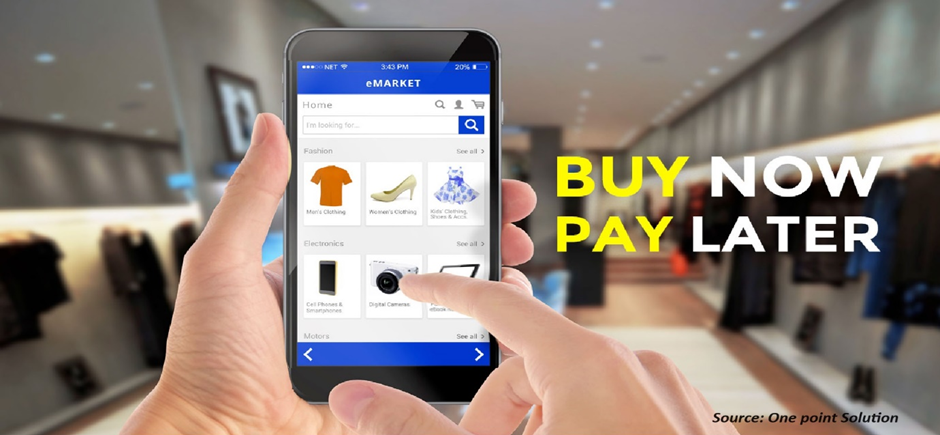
Europe Mobile Payment Market by Age (Generation Z, Millennials, Generation X, and Baby Boomers), by Payment Type (Proximity and Remote), and by Application (Money Transfers, Merchandise Purchases, Bill Payments, Airtime Top-ups, Ticketing, and Others) – Opportunity Analysis and Industry Forecast, 2024–2030
Industry: ICT & Media | Publish Date: 01-Sep-2024 | No of Pages: 171 | No. of Tables: 116 | No. of Figures: 81 | Format: PDF | Report Code : IC2469
Europe Mobile Payment Market Overview
The Europe Mobile Payment Market size was valued at USD 11.69 billion in 2023, and is predicted to reach USD 34.26 billion by 2030, with a CAGR of 15.6% from 2024 to 2030. The mobile payment system, also termed as money transfer, mobile money, m-payments, electronic payments, and digital payments, facilitates financial transactions using mobile devices such as smartphones, tablets, and wearables. These transactions are facilitated through mobile apps or various methods such as proximity and remote transactions. Mobile payment systems encompass diverse types such as mobile wallets, mobile banking apps, and online payment services such as PayPal, Venmo, and Google Pay.
Employing technologies such as SMS, near-field communication (NFC), quick response (QR) codes, and others, these systems ensure seamless transactions while employing robust security measures including encryption and biometric authentication to safeguard personal and financial data. Appreciated for their convenience, speed, security, and integration with other financial tools, mobile payment systems witness widespread adoption. Moreover, users can configure payment apps to automatically settle bills, such as utility or credit card bills, ensuring efficient financial management and preventing late payments.
Ease of Use in Mobile Payment Services Drives the Europe Mobile Payment Market Growth
Ease of use plays a pivotal role in driving the mobile payment market, ensuring platforms are more accessible and user-friendly. Simplified interfaces, quick transactions, and robust security features foster trust and encourage widespread adoption among consumers and merchants. Clear support and education additionally boost user confidence, ensuring a positive experience and driving long-term market growth.
Rising Fintech and Digital Banking Services Propels the Europe Mobile Payment Market
The rise of fintech and the evolution of digital banking are significant factors driving the advancement of the Europe mobile payment market in the region. Fintech innovations and digital banking services offer efficient and user-friendly financial solutions accessible via mobile devices.
These developments democratize financial services, enabling consumers to manage their finances, conduct transactions, and make payments conveniently from their smartphones. Integration of mobile payment functionalities within fintech applications and digital banking platforms enhances the user experience by providing seamless access to payment options and account management features.
Additionally, fintech firms and digital banks often spearhead the development of innovative payment technologies, such as peer-to-peer transfers, digital wallets, and contactless payments, thereby fostering adoption and shaping industry standards. As consumers increasingly adopt fintech and digital banking solutions, the mobile payment market expands, offering increased choice, efficiency, and accessibility in the digital economy.
Risks Related to Data Breaches and Security Concerns Hamper the Europe Mobile Payment Market Growth
Risks related to data breaches and security concerns pose formidable challenges to the Europe mobile payment market growth. With the increasing reliance on mobile devices for financial transactions, the potential for unauthorized access, data breaches, and identity theft has become a major concern for consumers and businesses. Instances of high-profile security incidents can undermine trust in mobile payment platforms, leading users to hesitate in adopting or continuing to use mobile payment services.
Additionally, regulatory bodies impose stringent requirements for data protection and cybersecurity, which add complexity and costs to mobile payment operations. Addressing these security concerns necessitates robust encryption, multi-factor authentication, and proactive security measures to instill confidence in mobile payment solutions and promote market growth.
The Emergence of Real-Time Payment Creates Opportunities in the Europe Mobile Payment Market
Real-time payments have emerged as a transformative force in the Europe mobile payment market, offering unprecedented speed and convenience in fund transfers in the region. These systems enable instantaneous transactions between parties, providing seamless and efficient payment experiences. This advancement empowers mobile payment providers to cater to diverse needs, whether it's splitting bills with friends, making retail purchases, or transferring funds between accounts.
Moreover, the integration of real-time payment capabilities into various sectors, such as e-commerce, peer-to-peer lending, and on-demand services, fosters innovation and expands the mobile payment ecosystem. In summary, the emergence of real-time payments revolutionizes payment processing and creates fertile ground for growth and innovation in the mobile payment market.
Russia Holds Dominant Share in the Europe Mobile Payment Market
Russia dominates the European mobile payment market share due to several factors. Firstly, the widespread adoption of mobile payment technologies such as NFC (Near Field Communication) and QR code payments has been facilitated by Russia's advanced telecommunications infrastructure. Secondly, the Russian government's initiatives to promote cashless transactions and digital banking have accelerated the uptake of mobile payments among consumers and businesses.
Additionally, the presence of established mobile payment providers such as Sberbank's SberPay and Yandex. Money has cultivated trust and familiarity with mobile payment solutions among the Russian population. Moreover, Russia's large population and growing economy offer significant market potential, attracting both domestic and international players to invest in the region's mobile payment ecosystem. These combined factors contribute to Russia's dominant position in the European mobile payment market.
Denmark is Expected to Show Steady Growth in the Europe Mobile Payment Market
Denmark is expected to show steady growth in the Europe mobile payment market due to several key factors. Firstly, Denmark boasts a highly developed digital infrastructure and a tech-savvy population, making it conducive to the adoption of innovative technologies such as mobile payments. Secondly, the Danish government has been proactive in promoting digitalization and cashless transactions, providing incentives for businesses to embrace electronic payment methods.
Additionally, Denmark's strong regulatory framework ensures security and consumer protection in the digital payment space, fostering trust among users. Moreover, the region's small size and homogenous population facilitate efficient implementation of new payment technologies and services. These factors combined create a favorable environment for steady growth in Denmark's mobile payment market within Europe.
Competitive Landscape
Various market players operating in the Europe mobile payment industry include Alphabet, Inc. (Google), Alibaba Group Holdings Limited, Amazon.com, Inc., Apple, Inc., PayPal Holdings, Inc., Visa, Inc., Tencent Holdings Limited (WeChat), MasterCard International, Inc., Samsung Electronics Co. Ltd., Block, Inc., and others. These key players have adopted various strategies to strengthen their position in the mobile payment sector in Australia.
Europe Mobile Payment Market Key Segments
By Age
-
Generation Z
-
Millennials
-
Generation X
-
Baby Boomers
By Payment Type
-
Proximity
-
Near-Field Communication (NFC)
-
Quick Response (QR) Code Payments
-
-
Remote
-
Internet Payments
-
SMS/Direct Carrier Billing
-
By Application
-
Money Transfers
-
Merchandise Purchases
-
Bill Payments
-
Airtime Top-ups
-
Ticketing
-
Others
By Country
-
The U.K.
-
Germany
-
France
-
Italy
-
Spain
-
Denmark
-
Netherlands
-
Finland
-
Sweden
-
Norway
-
Russia
-
Rest of Europe
REPORT SCOPE AND SEGMENTATION:
|
Parameters |
Details |
|
Market Size in 2023 |
USD 11.69 Billion |
|
Revenue Forecast in 2030 |
USD 34.26 Billion |
|
Growth Rate |
CAGR of 15.6% from 2024 to 2030 |
|
Analysis Period |
2023–2030 |
|
Base Year Considered |
2023 |
|
Forecast Period |
2024–2030 |
|
Market Size Estimation |
Billion (USD) |
|
Growth Factors |
|
|
Countries Covered |
12 |
|
Companies Profiled |
10 |
|
Market Share |
Available for 10 companies |
|
Customization Scope |
Free customization (equivalent up to 80 working hours of analysts) after purchase. Addition or alteration to region, regional, and segment scope. |
|
Pricing and Purchase Options |
Avail customized purchase options to meet your exact research needs. |
KEY PLAYERS
-
Alphabet, Inc. (Google)
-
Alibaba Group Holdings Limited
-
Amazon.com, Inc.
-
Apple, Inc.
-
PayPal Holdings, Inc.
-
Visa, Inc.
-
Tencent Holdings Limited (WeChat)
-
MasterCard International, Inc.
-
Samsung Electronics Co. Ltd.
-
Block, Inc.




 Speak to Our Analyst
Speak to Our Analyst

































